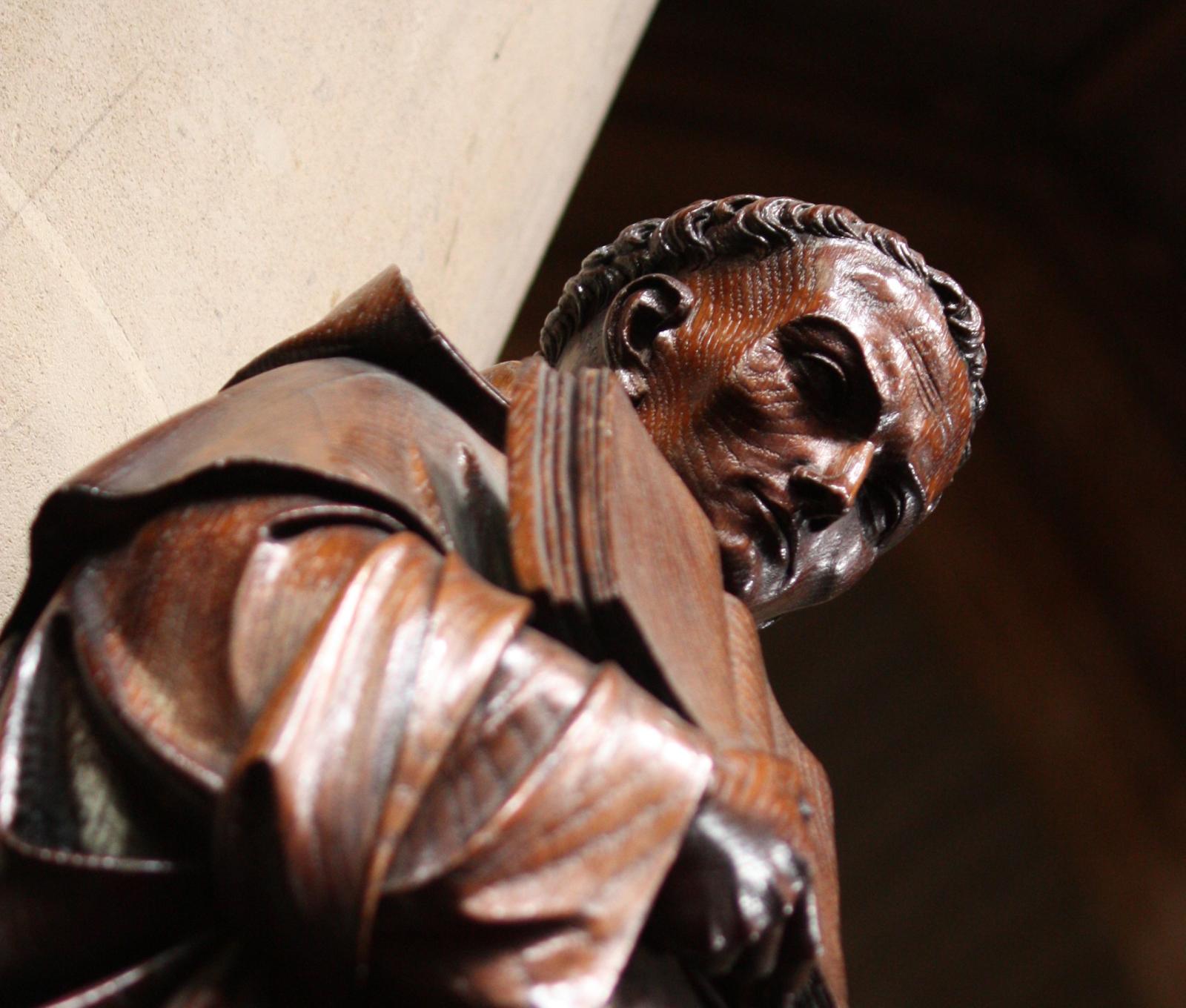By Fr Joseph Bailham, O.P.
During the academic year of 2018-2019, I had the privilege of living at the Convent of San Domenico in Bologna. The priory holds a special place among Dominicans because it is the place where St Dominic died in 1221 surrounded by his band of brothers belonging to the Order of Preachers which he had founded. It is in this priory where St Dominic’s relics are preserved in an elevated side chapel in the basilica in a gloriously ornate white stone tomb, behind which his skull is specially encased in a magnificent reliquary which is brought out in procession on his feast (in Bologna celebrated on 4 August on the original date of his feast prior to the reforms of the mid-20th century).
Each morning, before Lauds, I would walk around the basilica praying the rosary, passing first all before his skull. It is a strange experience to behold a skull on any occasion, but to see the skull of the founder of your Order, who died eight hundred years ago, and in whose footsteps you’ve dedicated your life to follow is a moving one.
A skull is a reminder of our humanity and of our limited time in this world. Seeing St Dominic each day, I was able to recall the various stories passed on to us modern-day Dominicans, about his fervent preaching, his gentleness towards others and his loving care for the brethren; all of which should influence the living out of my own life.
St Dominic wanted to be buried beneath the feet of his brethren where they would gather each day for prayer. He had no desire for any special privilege in death despite having brought this new religious order into existence. The brothers fulfilled this wish, and there he remained for some years. It was eventually the devotion of the faithful and with the encouragement of the pope that St Dominic was moved to a site which would more fittingly recognise this man’s role in God’s plan of salvation.
Dominicans do not typically have a cult of St Dominic akin to what one might find in other religious orders towards their founder. Other religious can find this odd at times. But I think for most Dominicans, it is the mission and way of living that St Dominic left us, which is the most important thing, rather than the man himself. He left us a life of studious contemplation of the truth, and of sharing the fruits of that contemplation through preaching and working for the salvation of souls, whilst belonging to a community of brethren.
That St Dominic never sought attention for himself but rather for the mission, has been an important reminder for me personally as a Dominican in how I live out my Dominican life. The most important thing is the mission entrusted to me and my brethren, ultimately a mission from Christ himself, but given a particular structure and mode of engagement by St Dominic. His was a life of emulating the life of Christ the itinerant preacher, and it is a way of life passed on to every Dominican wherever they might be.
Here at St Dominic’s Priory in Haverstock Hill, the Dominicans have sought, since the latter part of the 19th century, to live out this mission of contemplating the truth, preaching, and working for the salvation of souls through the parochial territory entrusted to us. This has taken on a new dimension through the elevation of the priory and parish church to the status of a diocesan shrine of the Most Holy Rosary. St Dominic’s, The Rosary Shrine, seeks to be that place of contemplation of the truth, of preaching the Good News and a place where sinners may encounter the loving mercy of God through our words, pastoral care and through our administration of the gifts of mercy, namely, the sacraments.
